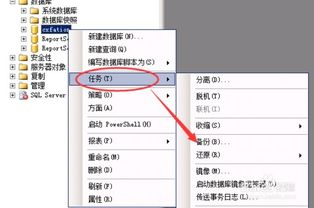Redis 云数据库: A Deep Dive into Understanding and Utilizing Redis on Cloud Platforms
Redis, an open-source in-memory data structure store, is often utilized as a database, cache, and message broker. With the rising demand for scalable and efficient data management solutions, Redis has made its way into cloud computing and is increasingly preferred by developers and businesses alike. In this article, we will explore the concepts, advantages, and essential features of Redis cloud databases, focusing on how to maximize their potential for your business.
What is Redis and Why Use It?

Redis stands for Remote Dictionary Server, and it is designed for high-performance workloads. Its in-memory data store architecture allows for extremely low-latency data access, making it suitable for applications requiring real-time performance. Redis supports various data structures such as strings, hashes, lists, sets, and more, which provides developers with the flexibility to encode complex data efficiently. In contrast to traditional SQL databases, Redis offers an unparalleled performance due to its embrace of in-memory technology, which significantly reduces disk I/O operations.
Using Redis on cloud platforms opens new avenues for scalability and ease of use. Cloud providers such as AWS, Google Cloud, and Azure offer managed Redis services, allowing users to deploy, operate, and scale their Redis instances without the need to manage underlying infrastructure. This way, businesses can focus on developing applications rather than maintaining servers.
Key Features of Redis Cloud Database
Redis cloud databases come with a plethora of features that make them an attractive option for developers. Some key features include:
- High Availability: Redis offers built-in replication and persistence features, ensuring your data is always available. Using Redis Sentinel, users can set up automatic failover mechanisms to maintain uptime even in the event of failures.
- Scalability: Cloud-based Redis instances allow dynamic scaling, where businesses can easily add or remove resources based on real-time demands. This flexibility is crucial for applications with variable workloads.
- Performance: With sub-millisecond latency and high throughput, Redis outperforms many traditional databases. This speed is essential for real-time analytics, gaming leaderboards, and caching scenarios.
- Data Persistence: Redis provides options for data persistence to disk through various mechanisms such as RDB snapshots and AOF (Append Only File) logging, ensuring data is not lost during outages.
- Flexible Data Structures: The variety of data types supported—like lists, sets, and sorted sets—allows developers to implement sophisticated data models efficiently.
Deploying Redis on Cloud Platforms
Deploying Redis in a cloud environment can be done either through fully managed services or by setting up instances on virtual machines. Here’s a brief overview of how to get started with Redis on popular cloud platforms:
- AWS Elasticache: AWS Elasticache offers a fully managed Redis solution. To deploy, simply navigate to the Elasticache section in the AWS Management Console, create a Redis cluster by configuring parameters (node type, engine version, etc.), and launch it. AWS takes care of scaling and maintenance.
- Google Cloud Memorystore: To create a Redis instance on Google Cloud, visit the Memorystore section in the GCP console. Choose whether you need a basic or standard tier Redis, customize the instance details, and click create. Google manages the underlying infrastructure for you.
- Azure Redis Cache: For Azure users, deploying Redis is also seamless. Head to the Azure portal, select "Redis Cache," configure the instance settings such as pricing tier and location, then create it. Azure handles scaling, security, and availability.
Best Practices for Using Redis in the Cloud
To make the most out of your Redis cloud database, here are some best practices to follow:
- Optimize Data Structures: Choosing the right data structures is vital for maintaining performance. Analyze your access patterns and select the data type that fits your use case best (e.g., use sets for unique values and hashes for storing objects).
- Monitor Performance: Utilize monitoring and alerting tools offered by your cloud provider to keep an eye on metrics such as memory usage, CPU load, and operation latency. Redis also has built-in commands like MONITOR that can help observe command execution in real-time.
- Implement Security Best Practices: Secure your Redis deployment by enabling encryption in transit (TLS), setting up authentication with passwords, and restricting access with Virtual Private Cloud (VPC) configurations.
- Utilize Clustering: For applications at scale, consider setting up Redis in cluster mode, which allows distributing data across multiple nodes, providing fault tolerance and improved performance.
- Regular Backups: Set up automated backups of your Redis instances to prevent data loss and ensure quick recovery in case of failures. This can typically be done through the managed services of cloud providers.
Conclusion
In light of its speed, scalability, and versatility, Redis has emerged as a preferred choice for many applications in the cloud. By choosing a managed Redis service, businesses can minimize the overhead of server management, ensuring that their teams can focus on building and enhancing their applications. The plethora of features offered by Redis, coupled with best practices for deployment and usage, makes it a formidable solution to tackle modern data challenges. As businesses increasingly rely on real-time data processing, Redis cloud databases will undoubtedly play a crucial role in their success.
Whether you are handling user sessions, caching data, or requiring quick analytics, Redis offers the performance and reliability necessary for today’s demanding applications. Embrace the power of Redis in the cloud to take your data management to the next level.






